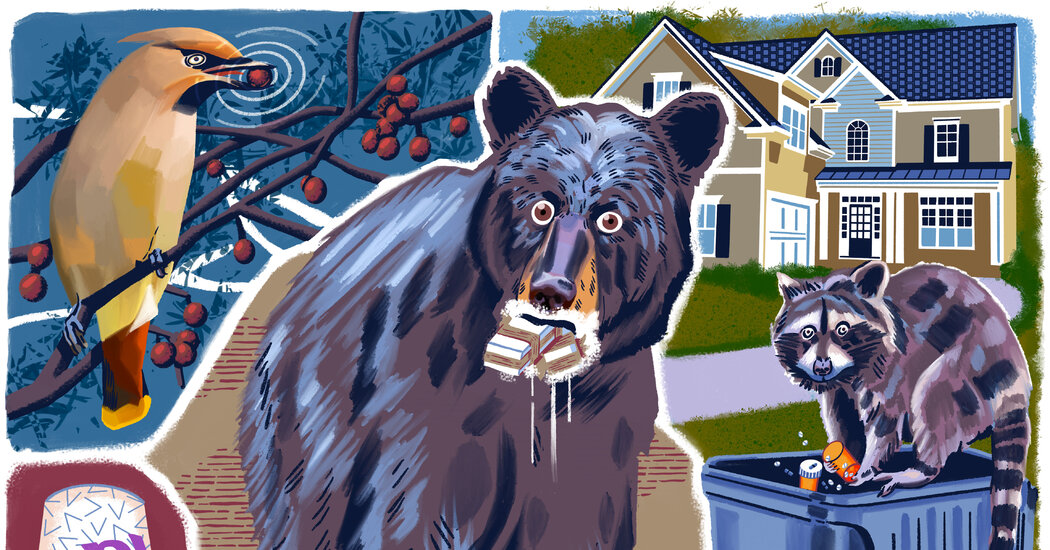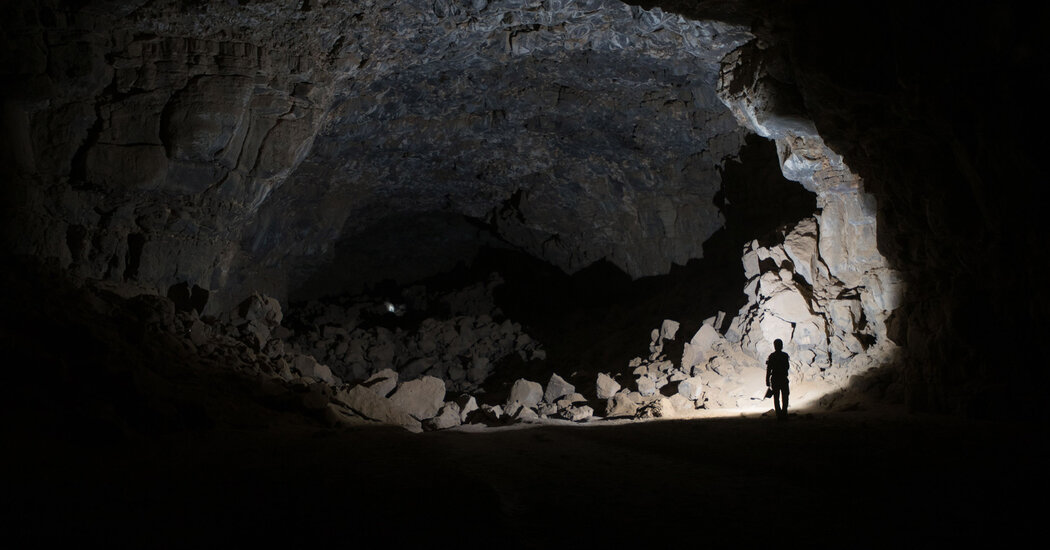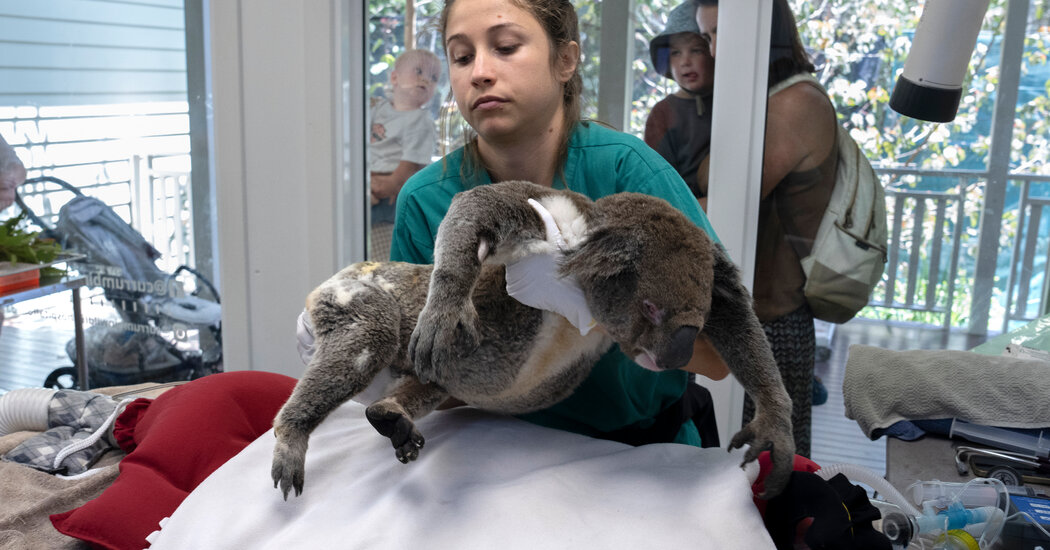

In September 1985, the authorities discovered the body of Andrew Thornton, a drug smuggler, in a Tennessee backyard. He had a bag full of cocaine, a failed parachute and the key to a small airplane, which turned up at a crash site about 60 miles away.
Investigators spent months searching for the rest of Mr. Thornton’s stash, which they suspected he had dropped along his airborne route. But in the mountains of northern Georgia, a black bear found it first.
″The bear got to it before we could, and he tore the duffel bag open, got him some cocaine and OD’d,” an official told The Associated Press in December of 1985.
The strange but true tale, which inspired the new movie “Cocaine Bear,” is the result of an unusual confluence of events, and wildlife professionals across the country said that they had never seen any other cases like it. (Still, after the authorities reportedly found thousands of pounds of cocaine in the Pacific Ocean this month, the internet began to imagine a sequel: “Cocaine Shark.”)
But experts have seen wild animals consume just about everything else: swiping high-end chocolate cakes out of homes, sucking syrup from hummingbird feeders and even making off with other intoxicants, including marijuana and beer.
Some of their stories are amusing, even relatable. “I received a call of a skunk out behind a hotel, running around in the parking lot with a McFlurry cup on its head,” said Jeff Hull, an environmental conservation officer for New York’s Department of Environmental Conservation. But animals’ taste for human goods — licit and illicit — can also bring trouble for them and for us.
Bears are notorious for getting into human provisions, especially as winter approaches and they need to pack on the pounds. “Essentially, they’re an eating machine,” said Dave Wattles, a black-bear and fur-bearer biologist for the Massachusetts Division of Fisheries and Wildlife. “They’re constantly searching out easy, calorie-rich foods.”
Bears, which have a keen sense of smell, have learned that humans are a reliable source of such foods. And so they turn over trash cans and dive into dumpsters. They raid bird feeders and beehives, steal livestock feed and pet food and ransack backyard chicken coops and the grease traps on outdoor grills.
Sometimes, they even break into homes. In the Berkshire Mountains, one bear burglar routinely sought out frozen treats.
“That bear entered several dwellings and passed by available food, going directly to the freezer and eating ice cream,” said Andrew Madden, the western district supervisor at the Massachusetts Division of Fisheries and Wildlife. “It always seemed to be vanilla, but that may be a result of availability.”
In the quest for high-calorie food, bears sometimes stumble upon other substances. In October 2020, a man in Cotopaxi, Colo., reported that a bear had raided an outdoor freezer, making off with marijuana edibles, said Joseph Livingston, a public information officer for Colorado Parks and Wildlife. (Planning ahead, perhaps, the animal also took French fries.)
Another Colorado resident reported that a bear had run off with a cooler of beer, and bears in that state have been observed biting into beer cans, Mr. Livingston said. “Once they learn things around humans might be food, they’re pretty curious and will try quite a bit of stuff,” he said.
Whatever else the effect, recreational drugs can make wild animals sick. In January 2018, Gibsons Wildlife Rehabilitation Center, in Gibsons, British Columbia, took in a dazed raccoon that had been discovered in a local yard. Laboratory testing suggested that the animal had recently ingested marijuana and benzodiazepines, depressants often prescribed for anxiety.
The center kept the animal warm and quiet, and over the course of a few hours, he came to. “Suddenly he was alive and, you know, ‘Let me go home,’” said Irene Davy, a co-founder of the center. “So we released him.”
Mrs. Davy is not sure how the raccoon got its paws on those substances, but it could have eaten edibles or the discarded end of a joint, she said, or found the benzodiazepines in the trash. (Veterinarians have also warned that, in places where the drug has been legalized, they are seeing more cases in which dogs have gobbled down edibles and discarded marijuana.)
Raccoons “relentlessly seek out edible garbage,” said Curt Allen, a senior wildlife biologist at the Oklahoma Department of Wildlife Conservation.
Drugs can also make their way into the water supply. In a 2021 paper, researchers reported that numerous illicit drugs, including cocaine, MDMA and ketamine, were detectable in a Hungarian lake after a music festival had been held on its shores. In 2019, scientists found traces of cocaine in freshwater shrimp collected from rivers in Britain.
The consequences for wildlife are unknown, but research suggests that water contaminated with illegal or prescription drugs can affect the health and behavior of fish and crustaceans. Eels exposed to water with low levels of cocaine became hyperactive and showed signs of muscle damage, according to one study.
Humans are not always the source of intoxicants. Think Wild Central Oregon, which runs a wildlife hotline and hospital, regularly treats cedar waxwings that have become intoxicated after eating fermented berries.
“They look pretty wobbly,” said Molly Honea, the organization’s development and communications coordinator. “Because of that disorientation and uncoordination, they end up striking windows.”
The hospital treats the birds’ injuries and provides supportive care for their inebriation. “We do stick them in the oxygen tank and get them rehydrated,” Ms. Honea said.
Stories have also circulated about other animals — including bears, elk and, perhaps most famously, elephants — that get “drunk” after eating fermented fruit. Such anecdotal reports are not always reliable, and some experts have argued that large creatures would have to consume an improbable amount of fruit to become intoxicated.
But a genetic analysis published in 2020 suggested that species varied widely in their ability to metabolize alcohol. “Overall, as a species, we’re pretty darn good at it,” said Amanda Melin, a biological anthropologist and ecologist at the University of Calgary and an author of the study. “So something that we can tolerate fairly well might be enough to severely inebriate another species.”
Even regular human food can pose dangers for wild animals, especially when eaten in large quantities. (“Bears don’t have self-control,” Mr. Allen noted.) Some can even be toxic.
Last September, wildlife officials found two dead black vultures in Dutchess County, N.Y. “The cause of death was theobromine/caffeine poisoning caused by material that looked and smelled like chocolate,” Kevin Hynes, the wildlife health program leader at the state’s Division of Fish and Wildlife, said in an email.
Animals that eat garbage often end up ingesting other kinds of trash. Colorado officials had to euthanize a seriously ill bear they found in a dumpster; a necropsy revealed that its stomach was “full of plastic and cigarette butts and just really nasty stuff,” Mr. Livingston said.
Sometimes, wild animals trying to consume a morsel of human food find themselves entangled in garbage, said Beth Axelrod, the president of the Wildlife Rescue League, a Virginia-based nonprofit group. Billy Rios, a wildlife rescuer who works with the organization, once freed a raccoon that had gotten its head stuck in a peanut butter jar, and he recently rescued another that required surgery after getting a soda can stuck on one of its legs.
And animals that learn that humans are a source of food may become more daring, moving from backyards into homes. “If those behaviors escalate, it unfortunately can put the bear, not from any fault of its own really, in a situation where it is now a threat and it has to be removed,” Dr. Wattles said. (Animals traipsing around developed areas are also at risk of being hit by cars, he added.)
With wildlife biology unlikely to change, the onus is on humans to reduce the risks, and experts recommended that people dispose of trash properly and store birdseed, pet food, garbage and other animal attractants in secure, indoor spaces. People should also refrain from feeding wildlife deliberately, they said — and, presumably, from dropping cocaine out of planes.
24World Media does not take any responsibility of the information you see on this page. The content this page contains is from independent third-party content provider. If you have any concerns regarding the content, please free to write us here: contact@24worldmedia.com

Common Mistakes When Using Athletic Field Tarps

High-Performance Diesel Truck Upgrades You Should Consider

Warehouse Optimization Tips To Improve Performance

Fire Hazards in Daily Life: The Most Common Ignition Sources

Yellowstone’s Wolves: A Debate Over Their Role in the Park’s Ecosystem

Earth Day 2024: A Look at 3 Places Adapting Quickly to Fight Climate Change

Millions of Girls in Africa Will Miss HPV Shots After Merck Production Problem

This Lava Tube in Saudi Arabia Has Been a Human Refuge for 7,000 Years

Four Wild Ways to Save the Koala (That Just Might Work)

National Academy Asks Court to Strip Sackler Name From Endowment

Ways Industrial Copper Helps Energy Production

The Ins and Out of Industrial Conveyor Belts